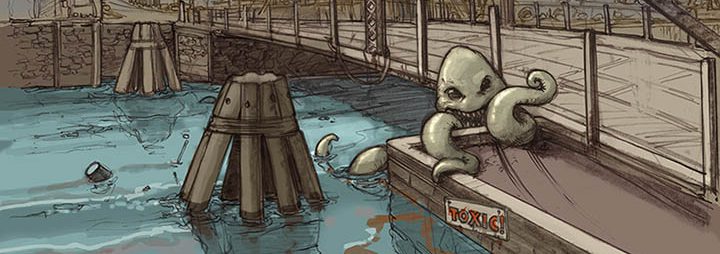On September 14, 2017, we had our first guest speaker, Joseph Alexiou, who came and talked about the history of the Gowanus. Joseph is the author of Gowanus: Brooklyn’s Curious Canal, a self-proclaimed history nerd and a Registered Tour Guide.
In 1766 the Gowanus was a salt water creek otherwise known as a salt marsh. The brackish water a mixture of salt and fresh water lent itself to a prosperous ecosystem that allowed oysters, fish, crabs, eels, dolphins, whales, hemp, and jute to flourish.
The Gowanus is an 8-mile-long estuary made into a canal and used as an Industrial/Commercial waterway. Twenty-six thousand vessels would bring 100 million dollars’ worth of goods to Brooklyn and New York via the canal. As Brooklyn grew so did its population resulting in a high dense area. Mixed with Industrial pollutants and sewage by 1870 the Gowanus was deemed a nuisance by the Board of Health. All the wildlife died and the canal took on a lavender color from the crude oil and other wastes.
Throughout the decades there have been unsuccessful attempts to clean the Gowanus Canal. The Water Treatment Plant, erected in 1906s’ goal was to bring oxygenated water into the canal and push pollutants out to the Basin. To date the Gowanus is still suffering from pollutants and toxins in their waters. The industrial waste sources are from manufactured gas plants, power stations, coal yards, chemical production, concrete and asphalt plants and paint and ink factories. Sediment of these pollutants are 20’ thick.
Due to our need for more housing and scarcity of land in 2004 developers saw the Gowanus as a great site for residential development. The former Mayor Bloomberg and friends controlled the land via zoning but with community opposition the Federal Government stepped in and labeled the Gowanus a Superfund Site. New York City (Bloomberg) and the major developers, the Toll Brothers, did not want the stigma of the Gowanus being labeled a Superfund Site so they appealed to the Federal Government to allow the City of New York to manage the cleanup of the Gowanus. This enabled spot zoning of a site to be approved hence resulting in the current luxury rental residential development along the Gowanus Canal.
What I found most fascinating about Joseph’s history about the Gowanus is the true reason the City of New York didn’t want the Federal Government to intervene and label the area a Superfund Site. Not only would it cause delays in development but the biggest culprit responsible for the pollution in the Gowanus is New York City. New York City doesn’t want to be financially held liable for the expensive and expansive cleanup of the Gowanus. To me understanding the history of failed attempts by wealthy businessmen and the city itself, I would want the city to be more proactive in cleaning up the Gowanus correctly instead of looking at their bottom line and have a Federal Appointed Committee oversee the cleanup. Currently the expected date for the Gowanus Canal cleanup is 2030. Too long and too far away…



